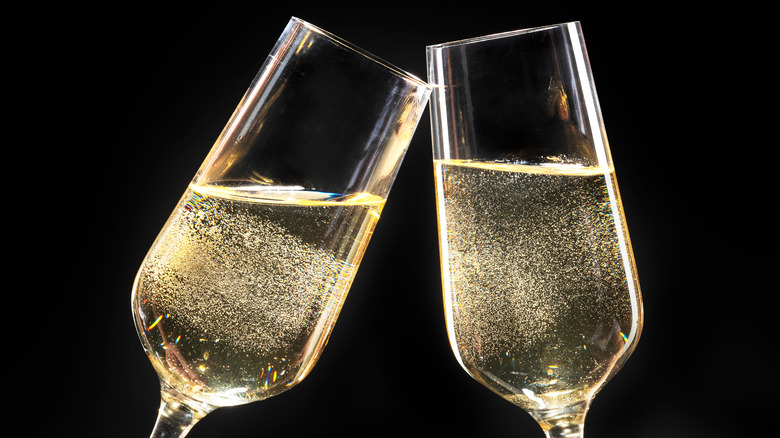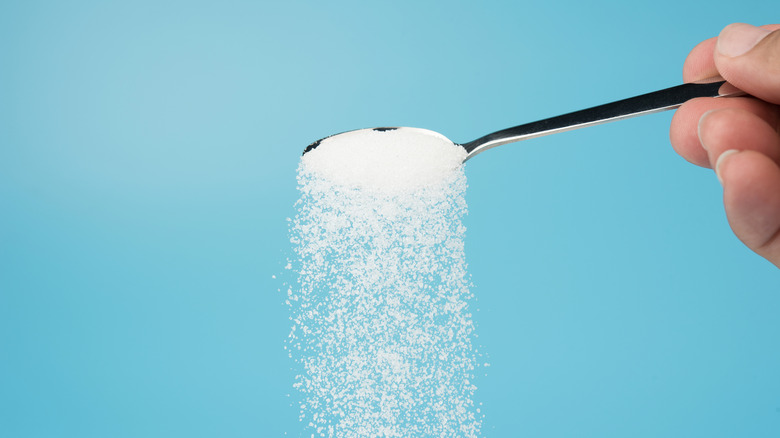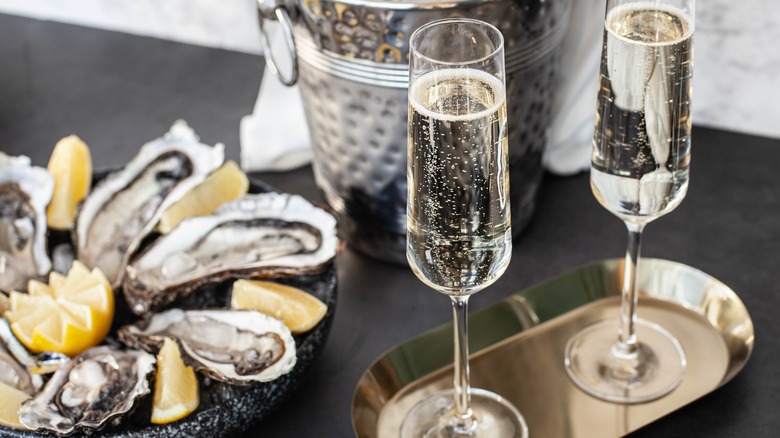What A Wine's 'Brut' And 'Sec' Labels Mean For Its Sweetness
When you're dealing with comparable foods and beverages, classifying them can be a difficult task. Fortunately, a slew of scales has been developed in the beverage and food world to categorize comestibles within the same sphere. Likely, most of you are familiar with the Scoville scale — a ranking of peppers by their spice level as it pertains to capsaicin content. But have you heard of the International Bitterness Unit? This number describes beer's isohumulone content — isohumulone comes from brewing hops and gives beer its bitter taste.
Other edible and drinkable goods forgo scales entirely. Instead, they opt to delineate between similar items by highlighting intrinsic characteristics. The major difference between regular and extra-virgin olive oil has to do with its production process. Oil can only be called EVOO if it is cold-pressed, never heating up past a certain point, and strained without the use of chemicals. When classifying sparkling wine, one key flavor factor determines what label is affixed to the side of the bubbly bottle: its sweetness factor!
Categorizing wine by its relative sweetness
Champagne can only bear the Champagne title if it comes from the drink's namesake region in France. But broadly speaking, sparkling wines utilize similar fermentation processes. Sparkling wine is made by introducing carbonation to an acid-forward wine to ensure that the concoction is as refreshing as possible. After distillation, to round out the sparkling drink, winemakers add a certain amount of sugar, otherwise known as a dosage, to each batch of champagne.
Whether a bottle of champagne has a brut or sec label depends on its sugar content. You may get confused when examining this difference etymologically – brut translates to unrefined or raw, but sec translates to dry. Nevertheless, if you're looking for a dry sparkling wine, you want a brut bottle. If you want something sweet, sec is the one to buy. To label a bottle of sparkling wine as brut, it has to contain between six and 12 grams of added sugar per serving, whereas sec wine has anywhere from 17 to 32 grams of sugar.
The extremes of sparkling wine sweetness and possible food pairings
The opposing ends of the Champagne spectrum have some extreme flavor offerings. Those who shun the sweet side of wine can enjoy a bottle of brut nature, which indicates that the wine has anywhere between zero and three grams of sugar. Those who love saccharine spirits might enjoy doux wine, which contains more than 50 grams of sugar – the equivalent of a candy bar.
There are no shortages of mistakes to avoid when drinking Champagne. But choosing a bottle of sparkling wine shouldn't stress you. Ultimately, the classification that you choose is up to personal preference. Do you like a dry drink or do you want to sip on something sweeter? However, you can also choose your classification of wine based on the food you're preparing. Brut wine pairs well with mellow flavors — like those present in seafood, white meat, and mushrooms. Sec wine complements items like strawberries, desserts, and blue cheese.


